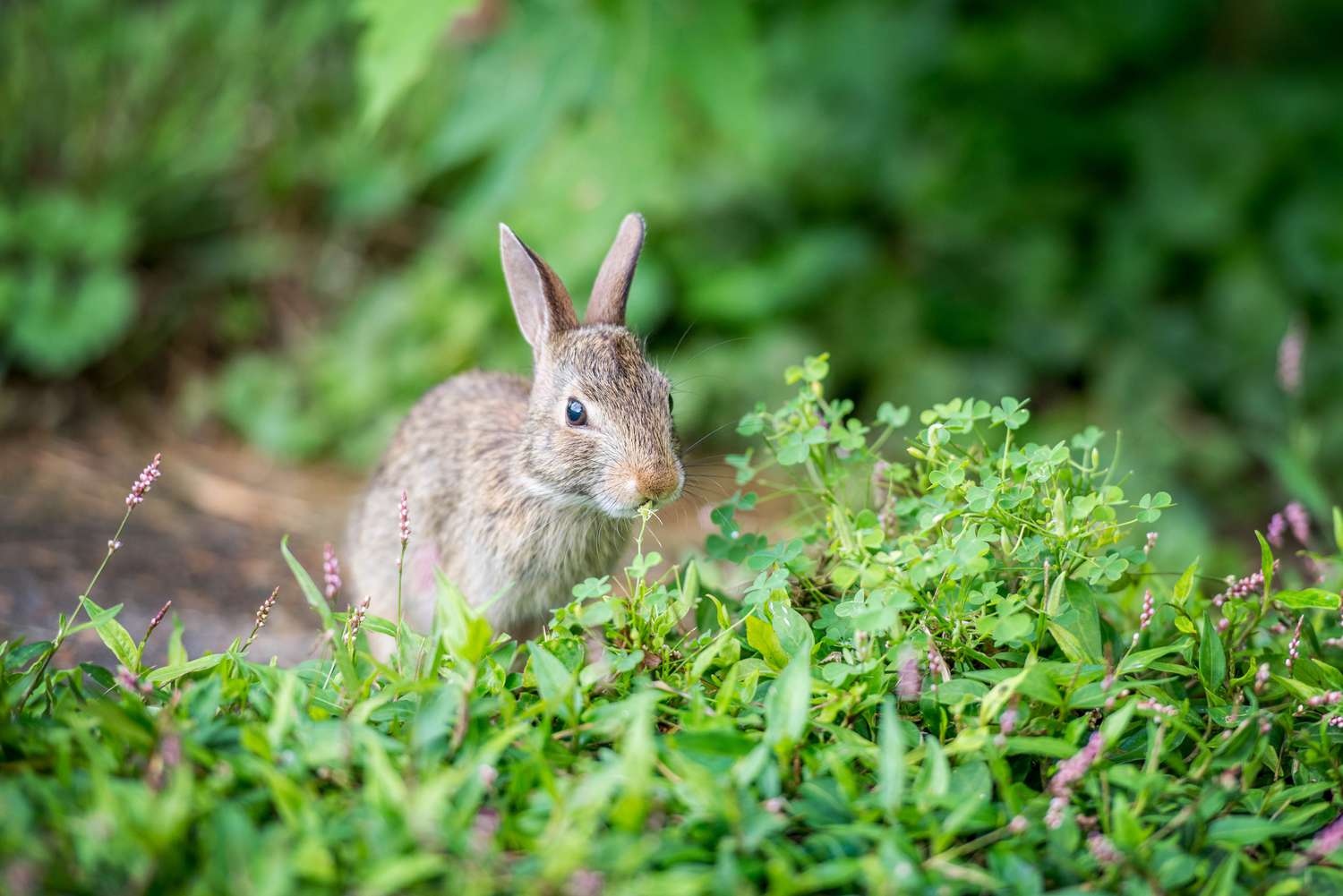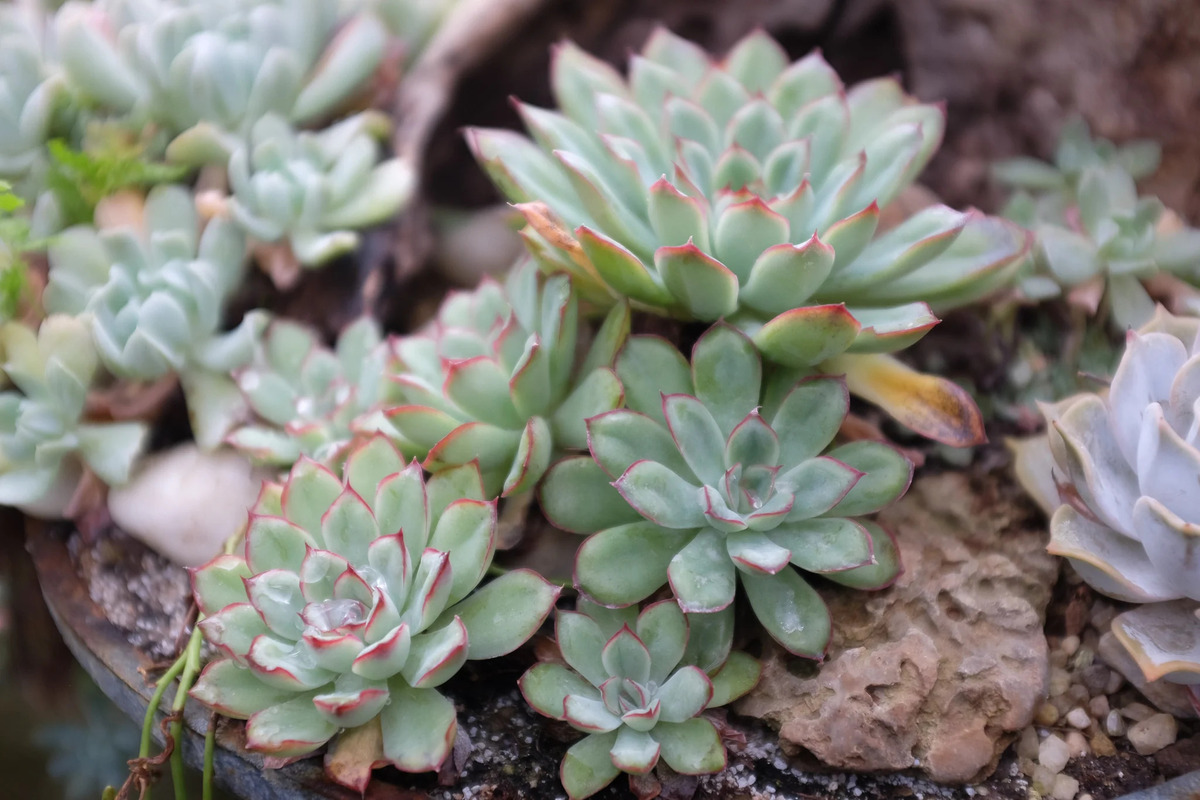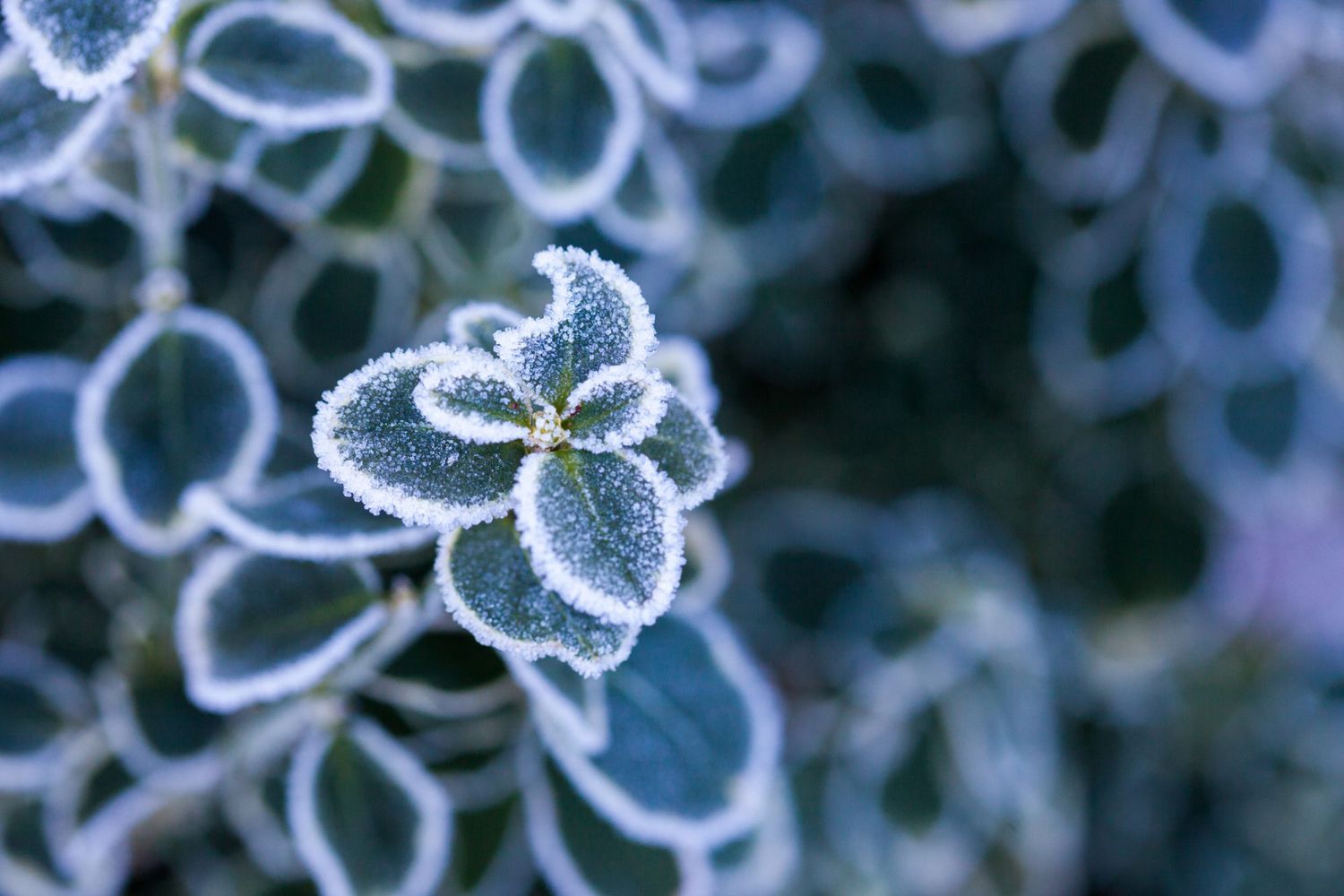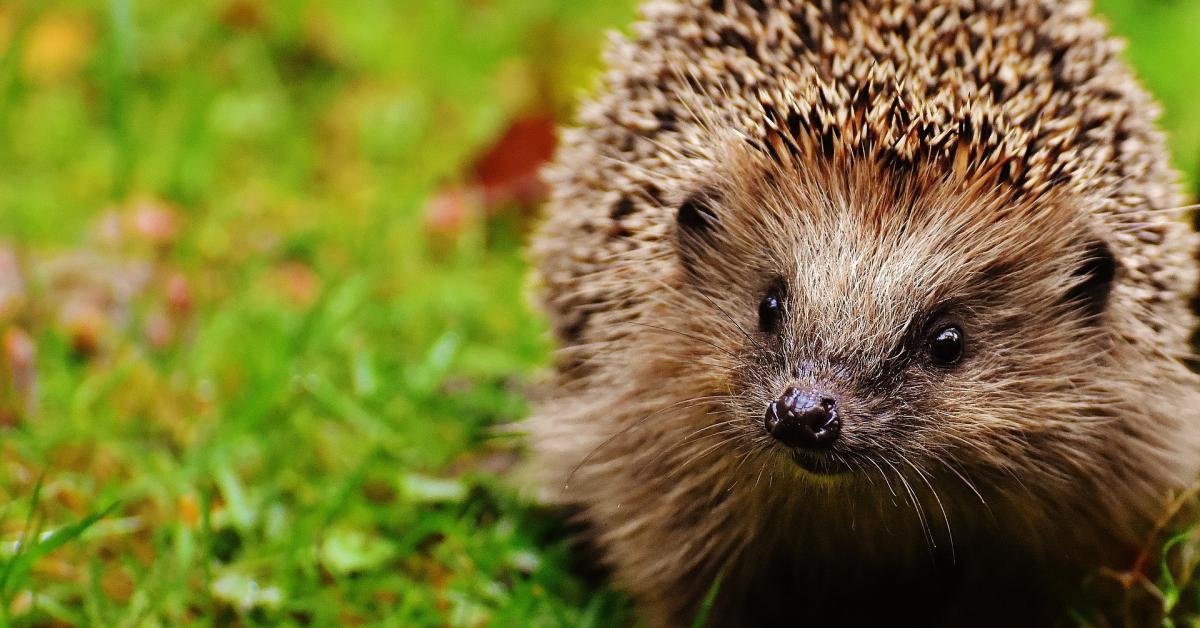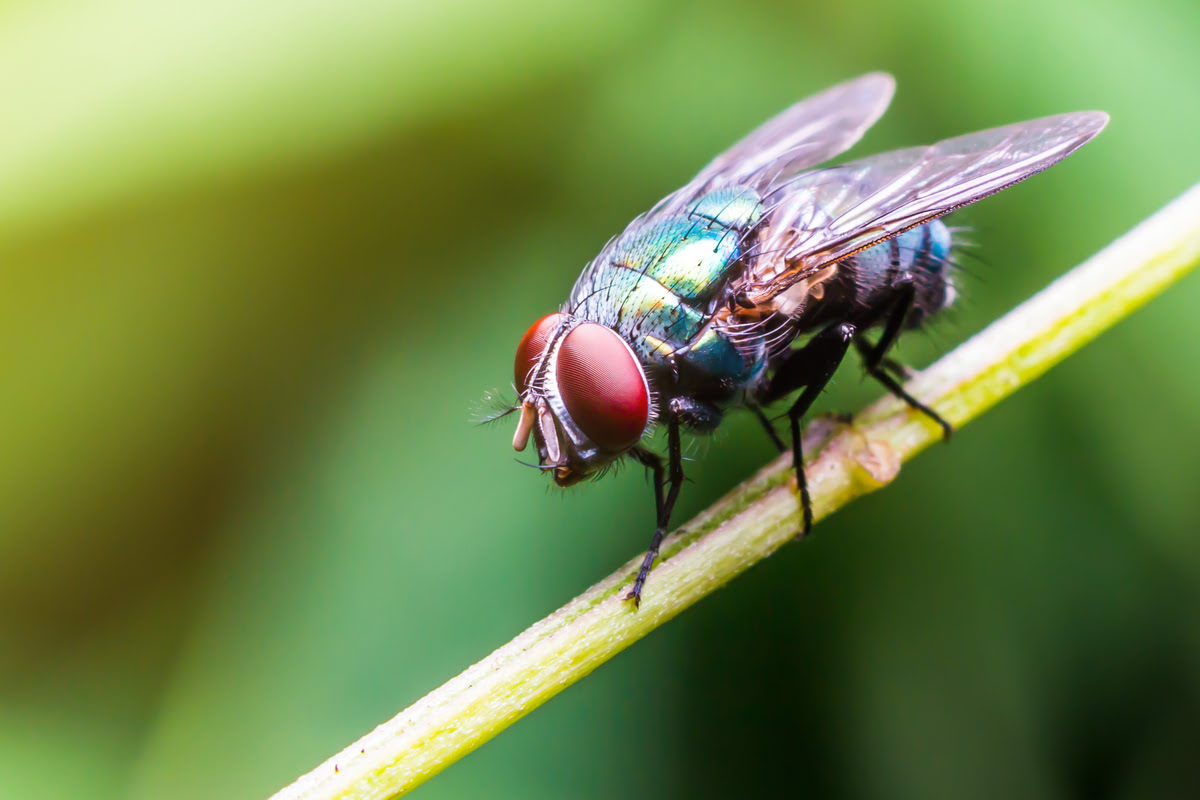Home>Gardening Techniques>Plant Care>How To Protect Seedlings From Animals
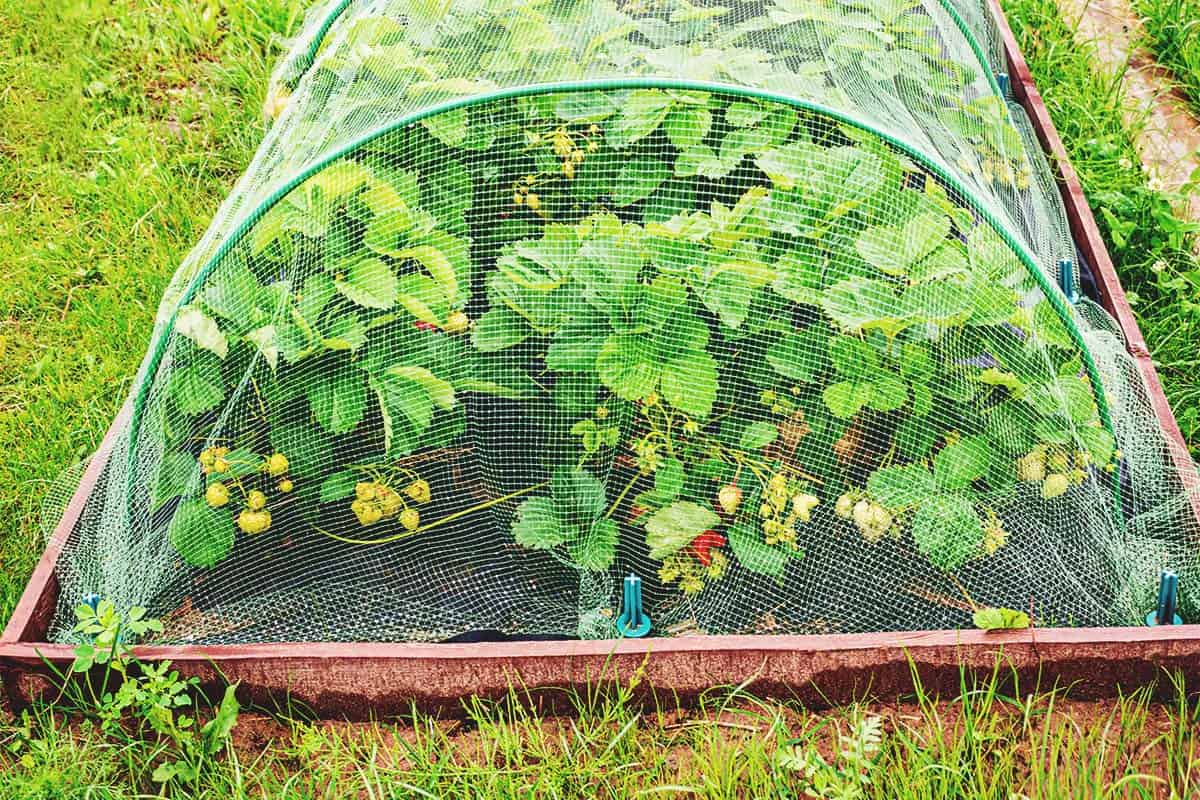

Plant Care
How To Protect Seedlings From Animals
Published: January 2, 2024
Learn effective plant care techniques to protect your seedlings from animals. Find out how to safeguard your precious plants from unwanted critters and ensure their healthy growth.
(Many of the links in this article redirect to a specific reviewed product. Your purchase of these products through affiliate links helps to generate commission for Chicagolandgardening.com, at no extra cost. Learn more)
Table of Contents
Introduction
Welcome to the world of plant care, where every gardener’s dream is to see their seedlings grow into healthy, thriving plants. However, one common challenge that gardeners often face is protecting their precious seedlings from the relentless appetites of animals. From mischievous squirrels to determined rabbits, these creatures can wreak havoc on a carefully cultivated garden in no time.
In this article, we will explore various methods and techniques to protect your seedlings from the clutches of these pesky animals. Whether you’re a seasoned gardener or just starting out, understanding the behavior of common garden pests and implementing effective strategies can make all the difference in the success of your plant care endeavors.
From physical barriers to natural deterrents and scare tactics, we will delve into a range of solutions that can help safeguard your seedlings. By incorporating these techniques into your plant care routine, you can create a thriving garden ecosystem that coexists peacefully with local wildlife.
So, let’s embark on this journey to discover how you can protect your seedlings from animals and nurture them into beautiful, mature plants. Get ready to arm yourself with knowledge and practical tips that will keep your garden safe and bountiful. Let’s dive in!
Common Animals That Threaten Seedlings
In order to effectively protect your seedlings, it’s important to first understand which animals pose a threat to them. By identifying these common culprits, you can tailor your protective measures to specifically target their behaviors and habits.
1. Squirrels: These agile and clever creatures are notorious for digging up newly planted seedlings in search of buried nuts or bulbs. They can quickly decimate a garden if left unchecked.
2. Rabbits: With their voracious appetites, rabbits can quickly graze through young seedlings, leaving behind nothing but stubs. Their ability to squeeze through small gaps in fences only adds to the challenge of keeping them at bay.
3. Deer: Majestic as they may be, deer can wreak havoc on a garden by browsing on tender seedlings. Their tall stature allows them to reach higher branches, making it essential to protect not only ground-level seedlings but also those at higher levels.
4. Groundhogs: These burrowing rodents have a particular affinity for tender shoots and leaves. They can quickly destroy a garden if their appetite goes unchecked.
5. Birds: Though not as damaging as some of the other animals on this list, birds can still pose a threat to seedlings by pecking at young leaves or plucking newly sprouted seeds from the soil.
By understanding the unique behaviors and preferences of these animals, you can tailor your protective measures to effectively deter and prevent them from causing harm to your seedlings. Let’s explore some strategies to outsmart them and safeguard your plants.
Understanding Animal Behavior
When it comes to protecting your seedlings from animals, having an understanding of their behavior is crucial. By knowing their habits and preferences, you can develop targeted methods to deter them and keep your plants safe. Let’s delve into the key aspects of animal behavior that are important to consider.
Feeding Patterns: Different animals have distinct feeding patterns. Some may have a preference for certain types of plants, while others may eat almost anything. Understanding what your local pests typically eat can help you prioritize the protection of specific plants or plant families.
Activity Times: Animals are most active during specific times of the day or night. By knowing the peak activity times of your garden’s pests, you can schedule your protective measures accordingly. For instance, if rabbits tend to be most active during the early morning and evening, you can focus your protection efforts during those times.
Movement and Access: Different animals have different capabilities when it comes to movement and accessing your garden. Some creatures, like squirrels, can easily climb fences and trees, while others, like groundhogs, are skilled diggers. Understanding how animals navigate your garden can help you identify vulnerable areas that require additional protection.
Scents and Tastes: Animals rely heavily on their sense of smell and taste to locate food sources. By understanding the scents and tastes that attract or repel them, you can select appropriate natural deterrents or repellents to keep the animals at bay.
Mating and Nesting Seasons: Animals have peak mating and nesting seasons, during which they may be more active or aggressive. It’s important to be aware of these seasons as they could impact the level of threat posed to your seedlings. Extra precautions may be needed during these times to ensure the safety of your plants.
By gaining insight into animal behavior, you can strategically plan your seedling protection measures. With this understanding, you can implement targeted solutions that not only deter pests but also minimize disruption to the ecosystem of your garden. Let’s explore some practical methods to physically protect your seedlings from animal damage.
Physical Barriers for Seedling Protection
One of the most effective methods for protecting your seedlings from animals is the use of physical barriers. By creating a physical barrier between the animals and your plants, you can greatly reduce the risk of damage. Here are some common physical barrier techniques:
- Fence Installation: Installing a fence around your garden can be highly effective in keeping out larger animals such as deer and rabbits. Ensure that the fence is at least 4-5 feet high to prevent animals from jumping over it. Burrowing animals like groundhogs may require the addition of an underground barrier to prevent them from digging under the fence.
- Netting and Mesh Covers: For smaller animals like squirrels and birds, netting or mesh covers can provide an effective barrier. Secure the netting or mesh over the seedlings, making sure there are no gaps for the animals to squeeze through. This method allows sunlight, air, and water to reach the plants while keeping the animals at bay.
- Individual Plant Protection: For particularly vulnerable seedlings, individually protecting them can be a great strategy. This can be done by using cages made of wire mesh or plastic around each plant. These cages should be tall enough to prevent animals from reaching the plant while still allowing room for growth.
When implementing physical barriers, it’s important to regularly inspect and maintain them. Check for any damage or areas where animals may have found a way to access your plants. Additionally, ensure that the barriers do not interfere with the growth and development of your seedlings. Adjust or remove them as needed to accommodate their growth.
Remember that physical barriers are not foolproof and may need to be combined with other protective measures for maximum effectiveness. Let’s explore some natural deterrents and repellents that can further enhance the protection of your seedlings.
Fence Installation
Fence installation is a highly effective method to protect your seedlings from larger animals such as deer and rabbits. A properly installed fence forms a physical barrier that prevents these animals from accessing your garden and causing damage to your precious plants. Here are some key considerations for installing a fence to safeguard your seedlings:
- Height: The height of your fence is crucial to prevent animals from jumping or reaching over it. For deer, a fence height of at least 8 feet is recommended, as they are capable of jumping quite high. For rabbits, a fence height of 2 to 3 feet is typically sufficient.
- Material: Choose a durable and sturdy material for your fence to withstand the weather elements and the animals’ attempts to breach it. Common fence materials include wire mesh, chicken wire, or vinyl-coated metal fencing.
- Depth: To deter burrowing animals like groundhogs, consider extending the fence below ground level. Bury the bottom of the fence at least 1 to 2 feet deep, creating a barrier that prevents animals from digging under it.
- Openings: Make sure the openings or gaps in the fence are small enough to prevent animals from squeezing through. Use smaller mesh or netting to cover any larger gaps that may exist.
- Maintenance: Regularly inspect your fence for any signs of damage or weak spots that animals might exploit. Repair or reinforce any areas that need attention to ensure the ongoing effectiveness of your fence.
When installing the fence, consider the layout and size of your garden. It’s important to enclose the entire garden area to provide comprehensive protection for your seedlings. Additionally, ensure that the fence is properly secured to the ground or supporting structures to prevent animals from knocking it over.
While fence installation is an effective method for seedling protection, keep in mind that some animals can still find ways to breach the fence. Therefore, it is advisable to combine this physical barrier with other deterrents and repellents for maximum effectiveness.
Now that you have learned about fence installation as a method to protect your seedlings, let’s explore other techniques such as netting and mesh covers to further fortify your defenses against animal threats.
Netting and Mesh Covers
Netting and mesh covers provide an excellent barrier for protecting your seedlings from smaller animals such as squirrels, birds, and other pests. These materials create a physical barrier that prevents animals from accessing your plants while still allowing sunlight, air, and water to reach them. Here are some key points to consider when using netting and mesh covers:
- Selecting the Right Netting: Choose netting or mesh covers that have small enough gaps to prevent animals from squeezing through. Look for materials with a mesh size of around ¼ inch to deter even the smallest pests.
- Covering the Seedlings: Carefully drape the netting or mesh covers over your seedlings, ensuring that all sides are covered and there are no gaps for animals to access the plants. Secure the edges of the netting or covers to the ground or the surrounding structures to keep them in place.
- Regular Inspection and Adjustment: Periodically check the netting or mesh covers to ensure they remain in place and are not damaged. Animals may attempt to chew through or push aside the barrier, so it’s important to repair any holes or vulnerabilities promptly.
- Considerations for Climbing Pests: If your garden has pests that are capable of climbing, such as squirrels or raccoons, consider using a taller barrier. Extend the netting or mesh covers higher, making it difficult for them to reach your seedlings from above.
Netting and mesh covers are versatile and can be used for both individual plants and larger areas. You can create cages or enclosures by placing stakes or supports around the plants and covering them with the netting or mesh. This method provides an extra layer of protection for particularly vulnerable seedlings.
When using netting or mesh covers, it’s important to strike a balance between protecting your seedlings and allowing for proper air circulation and pollination. Regularly inspect the covers to ensure there is no buildup of moisture or heat that could negatively affect plant health.
Now that you have learned about netting and mesh covers as a method for seedling protection, let’s explore other techniques such as individual plant protection using cages or barriers.
Individual Plant Protection
When you have particularly vulnerable seedlings or want to provide extra protection for specific plants, individual plant protection is a great strategy. This method involves creating cages or barriers around each plant to keep them safe from animals. Here’s what you need to know about individual plant protection:
- Wire Mesh or Plastic Cages: Use wire mesh or plastic cages to create a physical barrier around each plant. Ensure that the cage is tall enough to prevent animals from reaching the plant and that it allows enough space for growth.
- Size and Shape: Customize the size and shape of the cages based on the plant’s growth habit and the potential threats in your area. Smaller mesh should be used if there are small pests like insects or mice that might try to access the plant.
- Proper Installation: Secure the cages firmly into the ground to prevent animals from knocking them over or burrowing under them. Use stakes or supports to keep the cages upright, particularly in windy conditions.
- Adequate Ventilation and Access: Ensure that the cages provide enough ventilation and access for sunlight, air, and water to reach the plants. Monitor the cages regularly to prevent the accumulation of moisture or heat that could harm the plant.
- Regular Inspection and Maintenance: Check the cages regularly for any signs of damage or areas where animals may have found a way through. Repair or reinforce any weak spots to maintain the effectiveness of individual plant protection.
Individual plant protection is especially useful for seedlings that are more susceptible to animal damage or for plants that are particularly valuable or delicate. It allows you to provide targeted protection while still allowing the plants to grow and thrive.
Consider the specific needs and growth habits of your plants when designing and implementing individual plant protection. And remember to remove the cages once the plants have grown taller and are less vulnerable to animal threats.
Now that you have learned about individual plant protection, let’s explore natural deterrents and repellents that can further enhance the safeguarding of your seedlings against animal damage.
Natural Deterrents and Repellents
Another effective approach to protecting your seedlings from animals is the use of natural deterrents and repellents. These methods work by exploiting animals’ natural aversions or senses to deter them from approaching your plants. Here are some commonly used natural deterrents and repellents:
- Strong Scents: Certain scents are known to repel animals. For example, crushed garlic, onion, or chili powder can be sprinkled around the seedlings or mixed with water to create a spray. The strong odor will discourage animals from approaching the plants.
- Spices and Herbs: Planting aromatic herbs like rosemary, mint, or lavender near your seedlings can help deter animals. The strong scents of these plants can mask the smell of the seedlings, making them less appealing to pests.
- Repellent Plants: Some plants naturally repel pests due to their scent or taste. For example, marigolds are known to deter aphids, nematodes, and other insects. Strategically planting these repellent plants around your seedlings can provide an additional layer of protection.
- Homemade Repellent Spray: Create a homemade repellent spray by mixing a few drops of essential oils like peppermint, eucalyptus, or citronella with water and a mild detergent. Spray this mixture on and around the seedlings to discourage animals from approaching.
- Ultrasonic Devices: Ultrasonic devices emit high-frequency sounds that are unpleasant to animals but inaudible to humans. These devices can be placed near your seedlings to deter animals without harming them.
It’s important to note that natural deterrents and repellents may need to be reapplied regularly, especially after rainfall or when the scents start to fade. Additionally, be mindful of the specific needs and sensitivities of your plants when using these methods.
Using natural deterrents and repellents in combination with physical barriers can provide comprehensive protection for your seedlings. By creating an environment that animals find unappealing or uncomfortable, you can greatly reduce the risk of animal damage.
Now that you’ve learned about natural deterrents and repellents, let’s explore the concept of companion planting as another strategy for protecting your seedlings from animal threats.
Companion Planting
Companion planting is a natural and sustainable method to protect your seedlings by strategically planting certain species together. By selecting compatible plants that have beneficial interactions, you can create a garden ecosystem that deters pests and promotes healthy growth. Here’s how companion planting can help safeguard your seedlings:
- Natural Pest Control: Some plants naturally repel pests or attract beneficial insects that prey on pests. For example, planting marigolds alongside your seedlings can help repel aphids and nematodes. In turn, this decreases the likelihood of your seedlings being attacked by these pests.
- Trap Crops: Companion planting can also involve the use of trap crops, which are plants that attract pests away from your seedlings. By strategically planting trap crops, such as nasturtiums, you can lure pests like aphids or whiteflies away from your vulnerable plants.
- Attracting Beneficial Insects: Certain plants attract beneficial insects like ladybugs, lacewings, or parasitic wasps, which feed on garden pests. By including plants such as dill, fennel, or yarrow in your garden, you can create an environment that supports these helpful insects and brings balance to the ecosystem.
- Complementary Growth Habits: Companion planting can also involve selecting plants with complementary growth habits. Tall plants can act as natural shade for smaller, more delicate seedlings, protecting them from excessive sun or wind.
When practicing companion planting, it’s essential to consider the specific needs and preferences of each plant and select combinations that are compatible. Some plants may have incompatible growth requirements or may compete for resources, affecting the health and growth of your seedlings.
Research and plan your companion planting combinations carefully to ensure successful results. Experimenting with different plant combinations in your garden can help you find the most effective strategies for protecting your seedlings.
Remember that companion planting is not a foolproof method and should be complemented with other protective measures, such as physical barriers or natural deterrents. By creating a diverse and balanced garden ecosystem, you can enhance the natural defenses of your seedlings against animal threats.
Now that you have explored companion planting as a protective measure, let’s move on to the use of scare tactics and noise-making devices as another strategy for safeguarding your seedlings.
Scare Tactics and Noise-Making Devices
Scare tactics and noise-making devices can be effective methods to deter animals from approaching your seedlings. By creating a sense of threat or disturbance, you can discourage animals from venturing too close to your plants. Here are some scare tactics and noise-making devices you can utilize:
- Visual Deterrents: Installing visual deterrents such as scarecrows, reflective tape, or old CDs can create movement and reflections that scare away animals. The unpredictable motion and glimmers of light can make animals think twice about approaching your seedlings.
- Noise-Making Devices: Devices that produce loud or unexpected noises can startle animals and keep them away from your garden. Consider using wind chimes, motion-activated noise makers, or even a radio set to a talk show or music station with an intermittent volume increase to deter animals.
- Pets and Predators: The presence of pets or predators in your garden can act as a natural deterrent. Animals like dogs or even decoy plastic owls can create a sense of danger for potential pests, discouraging them from approaching your seedlings.
- Water Sprinklers: Motion-activated sprinklers can be an effective deterrent, especially for animals like deer or rabbits. When they approach the seedlings, the sudden burst of water from the sprinklers can startle and deter them from getting closer.
When using scare tactics and noise-making devices, it’s important to regularly change their placement or patterns to prevent animals from becoming accustomed to them. This helps maintain their effectiveness in deterring animals over the long term.
Remember that scare tactics and noise-making devices are supplementary methods and should be used in combination with other protective measures. By employing a variety of strategies, you can create a more comprehensive defense system for your seedlings.
Now that you’ve learned about scare tactics and noise-making devices, it’s time to wrap up this comprehensive guide on protecting your seedlings from animals. By implementing these strategies and adapting them to your specific garden environment, you can ensure the healthy growth and development of your seedlings, allowing them to flourish into mature, thriving plants.
Conclusion
Protecting your seedlings from animals is a crucial aspect of plant care that can ultimately determine the success of your garden. By understanding the behavior of common garden pests and implementing effective strategies, you can create a harmonious environment where your seedlings can thrive. Throughout this comprehensive guide, we have explored various methods and techniques to safeguard your seedlings from animal damage.
From physical barriers like fences, netting, and individual plant protection to natural deterrents and repellents, such as strong scents, companion planting, and scare tactics, there are numerous approaches to choose from. Each method has its own advantages and considerations, so it’s important to assess your specific needs and adapt the strategies accordingly.
By combining multiple protective measures, you can create a comprehensive defense system that minimizes the risk of animal damage to your seedlings. Regular inspection, maintenance, and adaptation of these measures are crucial to ensure their ongoing effectiveness.
Remember that successful plant care involves striking a balance between protecting your seedlings and preserving the ecological balance of your garden. Aim to create an environment that coexists with wildlife, promoting a healthy ecosystem while safeguarding your plants.
With the knowledge gained from this guide, you are now armed with a range of strategies to protect your seedlings. So go ahead, put these methods into practice, and watch as your seedlings grow into robust and beautiful plants that bring life and beauty to your garden.
Happy gardening!

